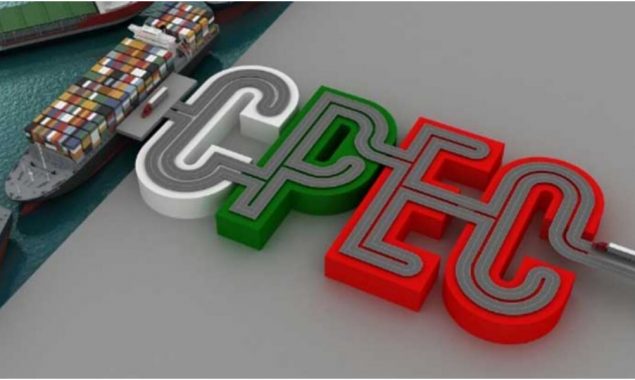
Upcoming CPEC projects expected to attract $28 billion: official Photo: File
KARACHI: The upcoming China-Pakistan Economic Corridor (CPEC) infrastructure projects are likely to attract $28 billion investment, CPEC Authority chairman Khalid Mansoor said on Friday.
“A total of $25 billion have already been invested under the CPEC, while another $28 billion is expected under the upcoming projects,” he said.
Mansoor said that the timeline for the execution of the CPEC phases spanned from 2015 to 2030, with many projects providing benefits over a much longer period.
“The country was going through the worst power crisis in 2013, as the industry was crippled and the economy was going down the drain due to the energy crisis,” he said.
“No financial institution in the world was willing to fund the coal based power generation, and in the country there was no expertise in mining or coal based power generation.”
“We went to China and asked for their help to solve the energy crisis, so that we should be able to address the ever declining economy of Pakistan, as there was no power in the country,” Mansoor added.
At the same time, China was looking to achieve its age-old dream of a silk route for trade and transportation, he added.
“The main objective of China from the CPEC is the bilateral and regional connectivity, as the main trade of China is from the eastern route where it confronts choke points and congestions.”
“Through CPEC, it wants to develop the western part of China and also create an alternate trade route, which will start from Kashghar of Xinjiang, through Pakistan all the way to Gwadar. And once you get there, then you are connected to the rest of the region,” he added.
In the first phase of the CPEC, energy goals achieved thus far include power plants worth 5,300MW which are up and running, the 880km Matiari-Lahore transmission line, a further 3,500MW to be implemented within the next 6 to 8 months, additional 4,000MW which is under the planning stage, while focusing on renewable energy, CPEC Authority chairman noted.
“On the transportation front, 1,800km long Karakoram Highway and 820km optic fiber line has been laid, the International Gwadar airport is being developed which is around 26 per cent complete, and the ML-1 railway line will be laid. Apart from this, $3.8 billion will be spent on Karachi Comprehensive Coastal Development Zone,” Mansoor said.
Mansoor during the briefing apprised the participants on industrial cooperation between the two countries, saying that 9 special economic zones (SEZs) are being developed alongside a free zone in Gwadar.
The current focus is on 4 SEZs, including Allama Iqbal Zone in Punjab, Rashakai in Khyber-Pakhtunkhwa (KP), Dhabeji in Sindh and Boston in Baluchistan and the free zone in Gwadar.
Within these SEZs, there is a strong presence of local and international investors. Although the general consensus is that these have been formed for China, contrary to this belief, other countries such as Germany and Netherlands too have invested in the project, he added.
Mansoor emphasised on the development of the textile sector, saying that the focus will be on Pakistan’s export market whereby its textile sector is set to reap foremost benefits, adding that Pakistan’s textile exports have an under 2 per cent share globally and planning is being undertaken to increase this by improving value added products.
The China Pakistan Free Trade Agreement-II was finalised in January 2020 with a total of 313 items selected for exports and 3,394 tariff lines were already zero rated under phase I, whereas another 2,471 tariff lines will become zero rated in the next 3 to 8 years, he informed.
Mansoor pointed to the importance of Gwadar city, saying that the key component of CPEC is the development of Gwadar city, port and free zone, adding that 10 companies are already operating in the free zone despite limited water and electricity.
An area near Gwadar has been selected for cotton cultivation as its soil is ideal for the same. Pakistan is currently importing 50 per cent of the yarn it uses for textile exports and this may be replaced.
Read More News On
Catch all the Business News, Breaking News Event and Latest News Updates on The BOL News
Download The BOL News App to get the Daily News Update & Follow us on Google News.




